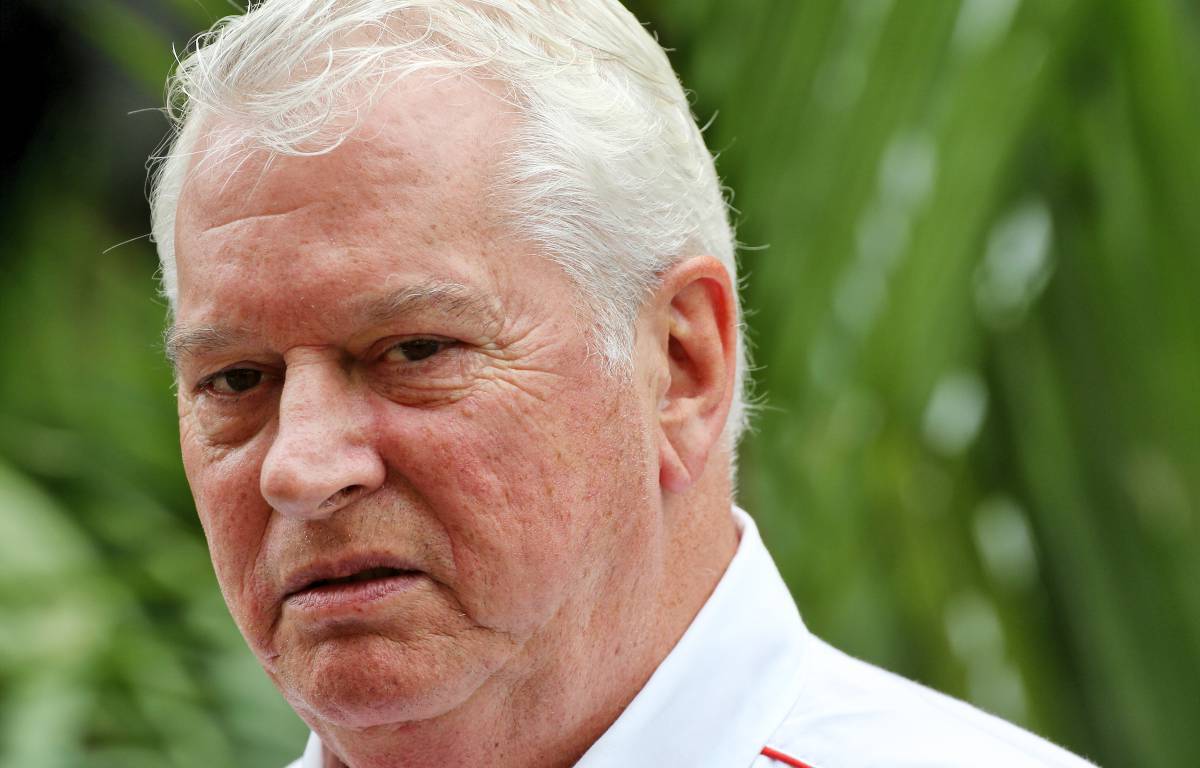Formula 1 News: Cadillac’s Accelerating Trajectory toward 2026 debut
With the calendar flipping to October 2025, the Cadillac F1 Team is firing on all cylinders less than 100 days out from Formula 1’s transformative 2026 season. Born from General Motors’ acquisition of the Andretti Global bid and greenlit by Formula One Management in March, this 11th grid entrant is defying the odds of a from-scratch build.
–by Mark Cipolloni–
Executive Engineering Consultant Pat Symonds (pictured above) calls the endeavor “pretty frightening” in scope, yet the squad’s rapid staff ramp-up, prototype validations, and deepening Ferrari ties signal a team primed not just to survive, but to contend.
Drawing from insights by Symonds, Team Principal Graeme Lowdon, and GM’s Eric Warren, Cadillac’s blueprint blends American ingenuity with European precision, targeting a debut that could shake up the pecking order.
Staffing Surge: From Skeleton Crew to Full-Throttle Force
Cadillac’s human horsepower has exploded since the year’s start. The UK operation kicked off with 159 staff, swelling to 209 by entry approval and now boasting a 426-strong global workforce encompassing mechanics, race engineers, and specialists. This growth, fueled by “incredible commitment” amid pre-approval uncertainty, has assembled a full complement ready for race-weekend simulations at Silverstone and Charlotte. Recruitment remains the thorniest hurdle in a talent-warped F1 landscape, but early hires have delivered “real front-of-the-grid quality” work, per Symonds.
The distributed setup—core design in Silverstone, manufacturing in Charlotte and Indianapolis, plus a borrowed Toyota wind tunnel in Cologne—bucks centralization trends but thrives on “no mental separation” via daily virtual huddles. Lowdon emphasizes this fosters a unified “environment where the mechanics get used to each other and learn everyone’s way of doing things,” banishing silos from the outset.
Chassis and Aero: Prototypes Paving the Path to Homologation
Technical gears are grinding at full revs. A non-race prototype chassis, built pre-final power unit specs, cleared rigorous Q2 testing of 2026’s stringent safety regs, proving processes like crash protocols that have derailed newcomers. The first “race-intent” monocoque is now queued for FIA homologation and crash tests in the coming weeks—potentially positioning Cadillac as the quickest to tick this box. Sea freight sails November 18, with engine fire-up pre-Christmas, shakedown in early January, and Barcelona pre-season testing opener on January 26.
Aero targets are “very aggressive,” zeroing in on floors, bodywork, and wings to surpass FIA downforce and drag forecasts by a deliberate margin—lessons etched from 2022’s underestimations. Early packaging calls have nipped major constraints, though minor tweaks like hydraulic routing persist from recent Ferrari clarifications. Parts are stacking in stores, and race sims are scripting full weekends to sync ops without a hiccup.
Driver Lineup: Simulator Synergy with Perez and Bottas
The cockpit is taking shape around confirmed duo Sergio Perez and Valtteri Bottas. Perez is deep in simulator laps at Charlotte and Silverstone, dialing in power steering feel and other nuances with GM’s direct input—”tune that power steering to exactly the way that Checo wants it,” as Symonds puts it. Bottas, wrapping his Mercedes tenure, has shared fit and steering prefs via cooperative channels, easing the transition. These sessions double as operational dry runs, honing team rhythms ahead of the real thing.
Ferrari Forge: Power, Partnership, and TPC Teamwork
As a customer squad, Cadillac’s Ferrari alliance is the engine room of progress. Beyond supplying power units and gearbox cassettes, the Scuderia has been “amazingly helpful,” sharing wiring, hybrid, and manifold details for seamless integration. Cadillac shuns Haas-like outsourcing, crafting suspensions, gearbox carriers, and more in-house to “be in charge of your own destiny.” Symonds adds, “That’s not the way to win the world championship” by leaning on suppliers.
Pre-debut testing leans on Ferrari’s Testing of Previous Cars (TPC) program, quashing rumors of Cadillac commandeering a Prancing Horse machine. Instead, mechanics shadow sessions—bleeding hydraulics, refueling—to build “muscle memory” and cohesion, with one joint day down and more queued. “The car isn’t actually important,” Lowdon clarifies; it’s about garage habits and erasing “us vs. them” divides. This fast-tracks familiarity, vital sans Cadillac’s own legacy hardware.
Powertrain Pivot: Eyes on 2029 with Flexibility Baked In
Ferrari props the 2026 launch, but GM’s in-house engine R&D—pledged for 2029 manufacturer status—sealed FOM approval. Warren views FIA murmurs of a 2030-31 V8 shift as “no different than any other kind of vehicle program,” with years of hybrid groundwork ensuring adaptability. No panic; it’s evolution, not revolution.
Hurdles in the Rearview: A Frightening But Forged Path
Symonds pulls no punches: infrastructure, logistics, and the rarity of scratch-builds form a “huge job list” with zero margin for Williams-esque 2019 stumbles. Yet, with prototypes proven and partnerships purring, momentum eclipses the mayhem. “We’re doing well… we’ve got a lot of parts appearing in the stores, and we’re getting on with it,” Symonds affirms.
As Australia looms, Cadillac isn’t merely arriving—it’s arriving with intent. In a regs-reset era, this GM-backed disruptor could turbocharge F1’s American chapter, blending grit and grid ambition into a championship-caliber threat. The lights are about to go out; Cadillac’s just warming up the tires.
